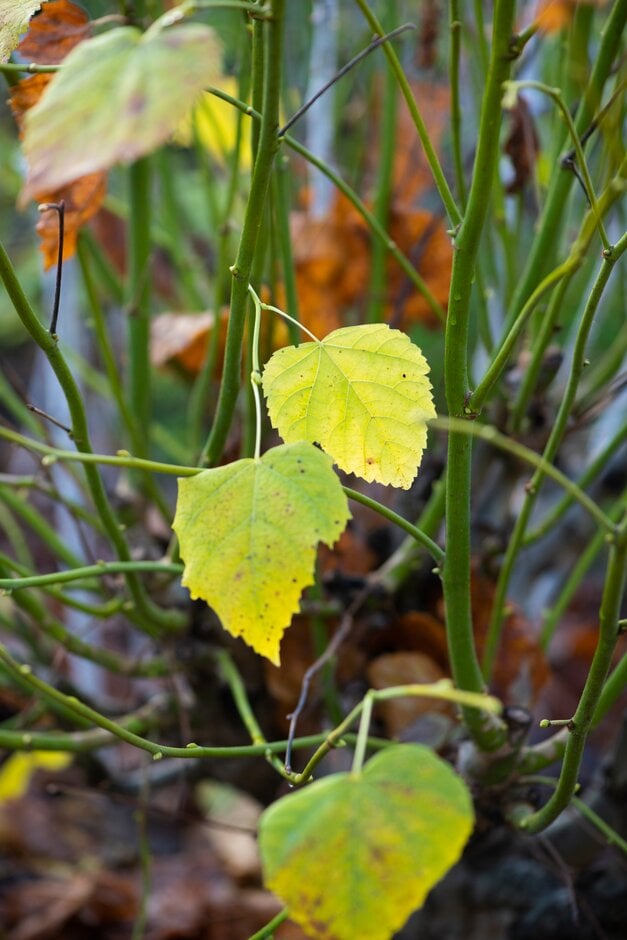Tilia platyphyllos 'Aurea'
large-leaved lime 'Aurea'
A large, fairly quick-growing dome-shaped deciduous tree with brown-grey bark and broad, toothed yellow-green foliage, turning bright yellow in autumn. Fragrant, pale yellow flowers in pendent clusters appear in early to midsummer. Pollarding highlights the golden-yellow young shoots for winter colour

Buy this plant
Size
Ultimate height
Higher than 12 metresTime to ultimate height
20–50 yearsUltimate spread
Wider than 8 metresGrowing conditions
Moisture
Moist but well–drainedpH
Alkaline, NeutralColour & scent
| Stem | Flower | Foliage | Fruit | |
| Spring | Brown Grey Silver | Green Yellow | ||
|---|---|---|---|---|
| Summer | Brown Grey Silver | Cream | Green Yellow | |
| Autumn | Brown Grey Silver | Green Yellow | ||
| Winter | Brown Grey Silver |
Position
- Full sun
- Partial shade
Aspect
East–facing or South–facing or West–facing
Exposure
Sheltered Hardiness
H6Botanical details
- Family
- Malvaceae
- Native to GB / Ireland
- No
- Foliage
- Deciduous
- Habit
- Spreading branched
- Genus
Tilia are deciduous trees with broadly ovate or heart-shaped leaves and pendulous clusters of fragrant yellow-green flowers, followed by conspicuous winged fruits
- Name status
Accepted
How to grow
Cultivation
Suitable for parks and very large gardens. Grow in moist but well-drained soil in full sun or part shade, with shelter from cold winds. May produce thickets of stems (suckers) at the base of the trunk. For more advice see tree cultivation
Propagation
Propagate by chip budding although care must be taken with the choice of rootstock or propagate by suckers in winter
Suggested planting locations and garden types
- Architectural
- Wildlife gardens
- Hedging and screens
Pruning
Pruning group 1; a suitable tree for coppicing, pleaching and pollarding; remove suckers at the base of the trunk
Pests
May be susceptible to aphids, horse chestnut scale, caterpillars, sawflies and gall mites
Diseases
May be susceptible to sooty mould, phytophthora root rot and honey fungus
Get involved
The Royal Horticultural Society is the UK’s leading gardening charity. We aim to enrich everyone’s life through plants, and make the UK a greener and more beautiful place.